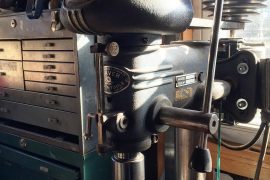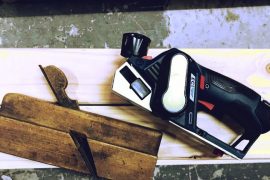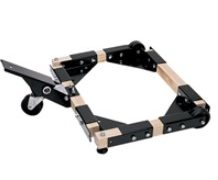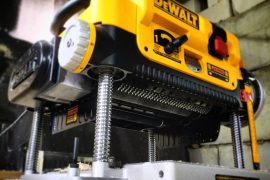Using woodworking machines for mechanized woodworking is not always possible. For example, when processing a large number of different parts or fitting joints during the assembly of wooden constructions and products, the use of machines is either very difficult and unprofitable, or simply impossible.
In such cases, mechanized processing is usually performed with electrified tools, which are portable mechanisms that can be easily included in the work at any workplace.
Electric tools must be light (their weight usually does not exceed 25 kg) and equipped with low-power motors (usually not more than 1 ket). The productivity of power tools, though considerably inferior to the productivity of machines, but many times greater than the productivity of manual labor.
Thus, power tools fill the gap between the work on the machines and manual work and significantly expand the possibility of mechanization of woodworking.
The following electric tools are used for joinery work: electric saws, electric pliers, electric pliers, electric mills and electric drills or electric drills.
Regardless of their purpose, each electric tool consists of an electric motor, a working part and a control mechanism mounted in a common housing.
The transmission of motion from the motor to the cutting tool is not the same in all power tools. In some power tools, the working part is directly connected to the electric motor and has the same rotational speed.
In other cases, the transmission of the rotation from the electric motor to the working part is made by means of a special transmission mechanism consisting of a system of gears; this transmission mechanism is called a gearbox.
Due to their low power, the motors of power tools cannot withstand continuous continuous operation, which causes them to become very hot, and they may burn out. For this reason, power tools must be operated at intervals necessary for cooling down; usually, these intervals are about half of the total working time.
Duration of continuous work and the moment when it is necessary to make a break, it is difficult to specify in advance, as it depends on a number of circumstances.
So, for example, hardness of wood, its increased humidity and increased knottiness, bluntness of the cutter, excessively increased pressure on the tool, etc. increase the load of the electric motor, which accelerates its heating and causes the need for more frequent stops for cooling.
Practically switch off the power tool when it becomes difficult to hold it with bare hands (without gloves), which corresponds to a body temperature of about 60-70°.





